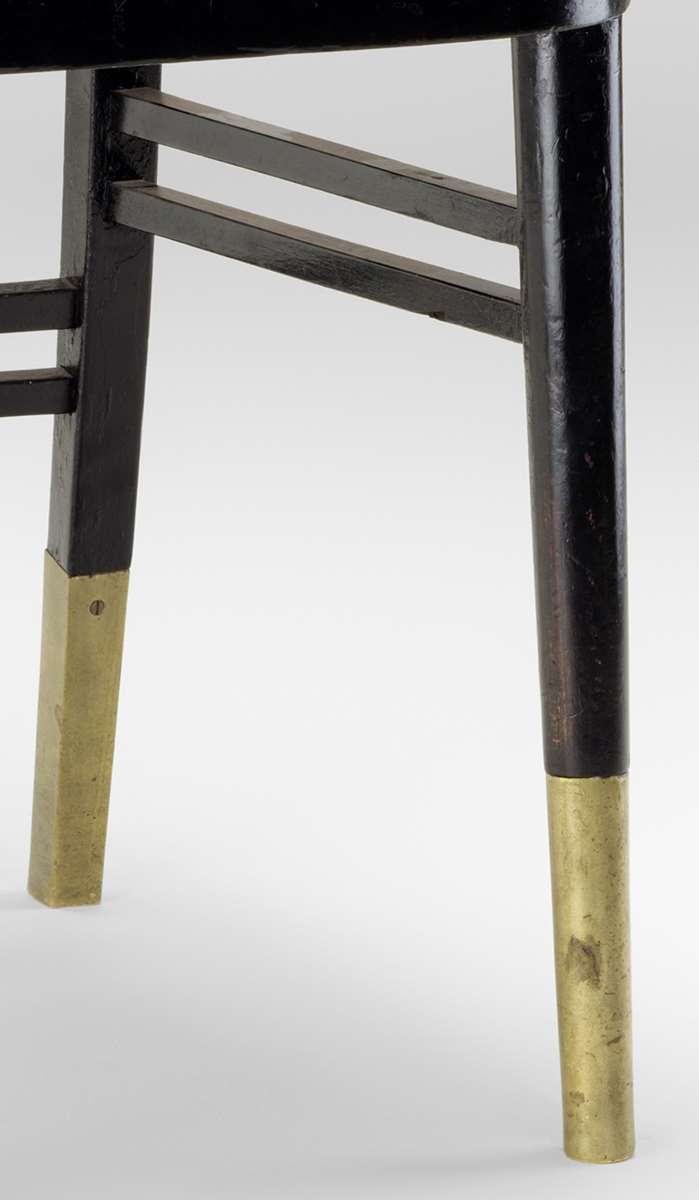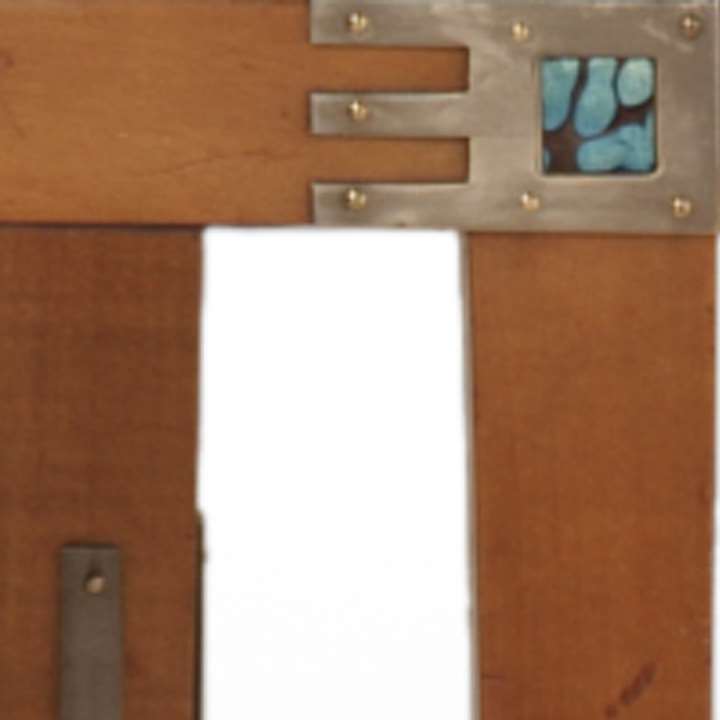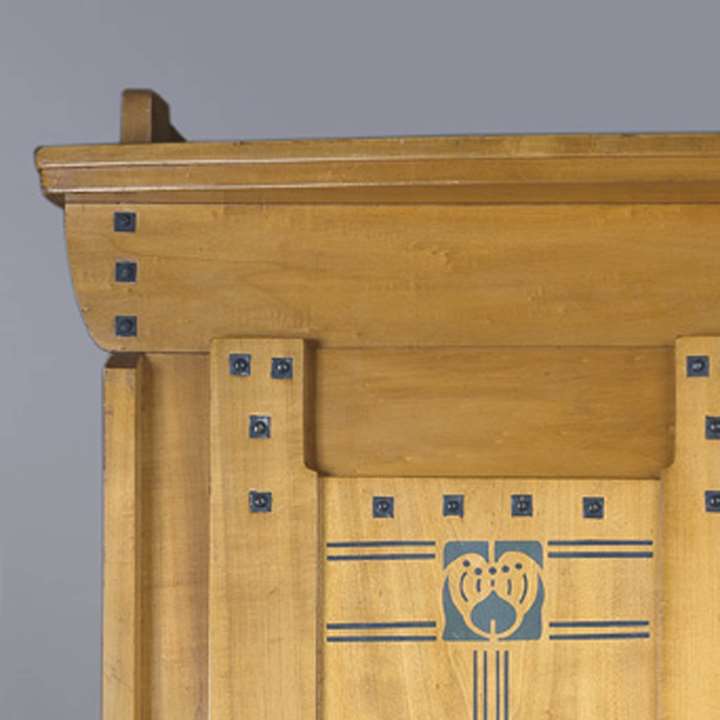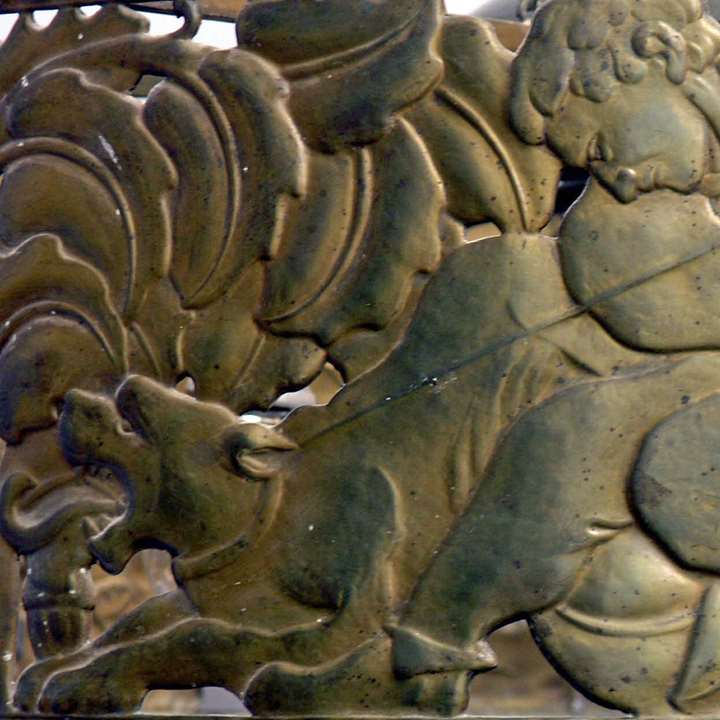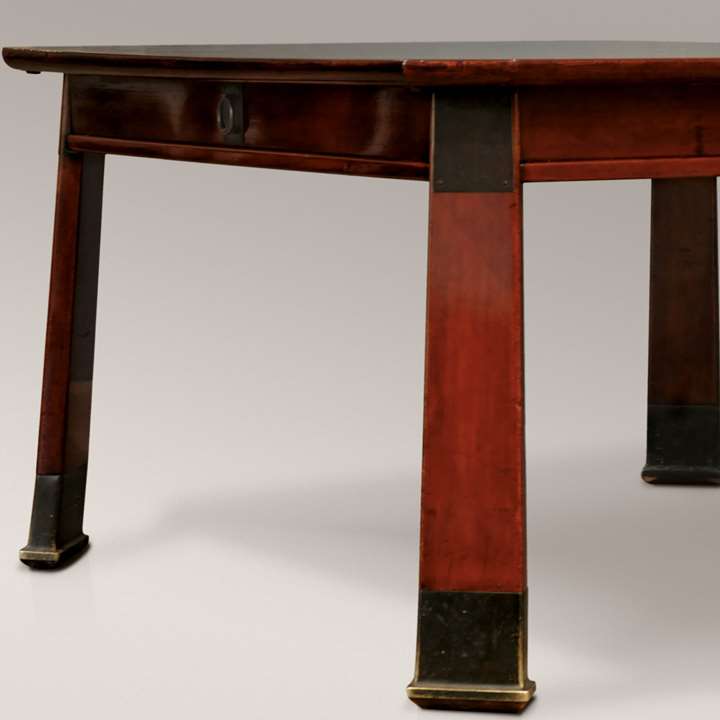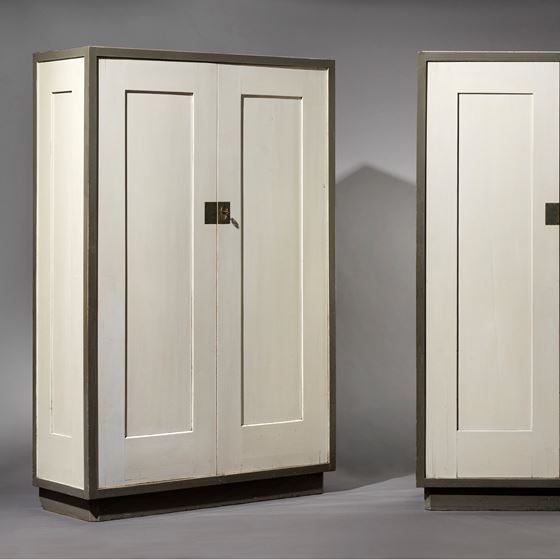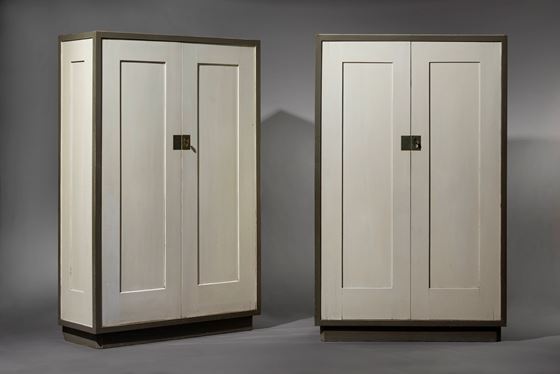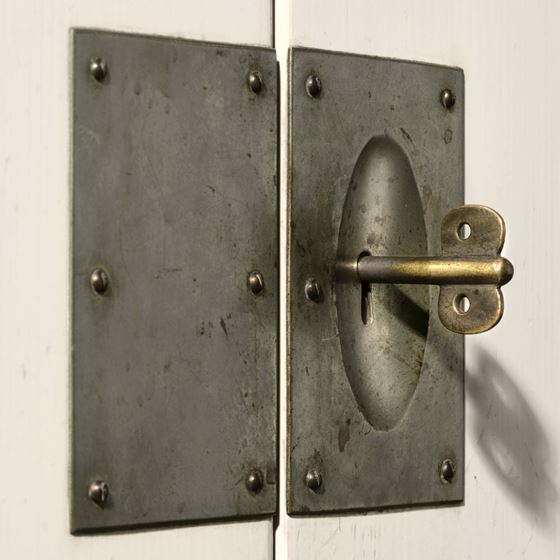Description & Technical information
Christian Witt-Doerring, curator at the Neue Galerie, NY, writes:
The provenance of this cupboard from the apartment of Alfred Roller (1864-1935) puts it at the heart of the artistic scene in fin-de-siècle Vienna. Alfred Roller studied painting at the Vienna Academy of Fine Arts and in 1897 was a founding member of the Vienna Secession, along with such artists as Gustav Klimt, Josef Hoffmann and Koloman Moser. Joining the fray in its battle for the unity of the arts, Roller did not only engage in painting and graphic works, but also the design of decorative arts, and above all stage design. He was on occasion editor-in-charge of "Ver Sacrum", the monthly periodical of the Vienna Secession; his design decorates the cover of the first number. For the famous 14th Secession Exhibition of 1902, the Beethoven exhibition, he designed the wall of the central hall with his fresco-mosaic "Die sinkende Nacht" (The Sinking Night) as matching piece to Gustav Klimt's Beethoven frieze. From 1900, he was a professor alongside Koloman Moser and Josef Hoffmann at the Vienna School of Decorative Arts and thus one of the main forces in the renewal of Austrian arts and crafts. He was the director of the school from 1909 to 1933 and, in view of the difficult economic era, reoriented the syllabus more in the direction of cooperation with industry. He is renowned internationally for his collaboration with Gustav Mahler at the Vienna Opera, Max Reinhardt, Hugo von Hoffmannsthal and Richard Strauss, also as co-founder of the Salzburg Festival (1920). From 1903, as director of stage design at the Vienna Opera, he revolutionised the style of its theatrical performances by emphasising meaning rather than reality on stage – he thus played a pre-eminent part in realising Gustav Mahler's concept of opera as a total work of art.
The cupboard from Roller's apartment must have been made around 1906, when Roller married his pupil Mileva Stoisavljevic and moved from his bachelor flat in Vienna 3, Baumanngasse 6, to Vienna 3, Landstrasse Hauptstrass 136. The couple's new apartment was in the same building as the villa of Editha Mautner von Markhof, Koloma Moser's mother-in-law, and the studio of the Secession member and painter Josef Engelhart. It was provided with contemporary, modern Viennese furniture, among the pieces a smaller, plainer version of the studio cabinet designed by Josef Hoffmann for Koloman Moser in 1898 (today in the MAK).
The designer of the remaining, very high-quality furnishings are unfortunately not known. In keeping with the lofty aesthetic standards of the Vienna avant-garde's concept of the total work of art, the walls of the living room were structured in a system of bright planes and dark frames. The system encompassed the case furniture and Alfred Roller's landscape pictures. Besides metalwork of the Wiener Werkstätte, ceramics produced by the Vienna School of Decorative Arts perfected the home environment.
The cupboard is one of three pieces placed either in the anteroom or an actual wardrobe in Roller's apartment. It corresponds to the aesthetics of the plain, painted soft-wood cupboards and cabinets designed by Josef Hoffmann around 1905. Hoffmann invested the same aesthetic scrupulousness in furnishing ancillary rooms (kitchens, servants' quarters, cloakrooms) as we encounter in his "showcase" rooms reflecting status and prestige. What generates an atmosphere of quality and enlightened designing is not the material, but proportion, finish and functionality. The leitmotif of the modern movement has been given shape here in an exemplary fashion, the unity of form and function. Ornamentation of the cupboard consists solely in the deliberate underlining of structural and constructional elements. They take shape as frame and filling, the outer framework emphasised through colour (grey). So that its clarity is not disturbed, the doors are attached with pins and not with hinges, unusual for Vienna. The grey frame and the grey base – offset to the back – form a tectonically strong framework that nonetheless verges on transparency owing to the white side walls and doors, thus liberating the furniture of its heaviness. Enhancing the whole effect is the meticulously worked keyhole escutcheon with the specially designed key. Six screws have been used to attach it, and quite deliberately. Rather than taking effect as a necessary evil, they are deployed as an innovative and welcome attribute of design.
The Roller cupboard is comparable in aesthetic concept to the broom cupboard and the two anteroom cupboards Hoffmann made in 1905/06 for the apartment of Dr. Hermann Wittgenstein (both today in the MAK).
Date: 1906
Period: 20th century
Origin: Vienna
Medium: Pine, White metal
Dimensions: 190.5 x 120 x 47 cm (75 x 47¹/₄ x 18¹/₂ inches)
Categories: Furniture
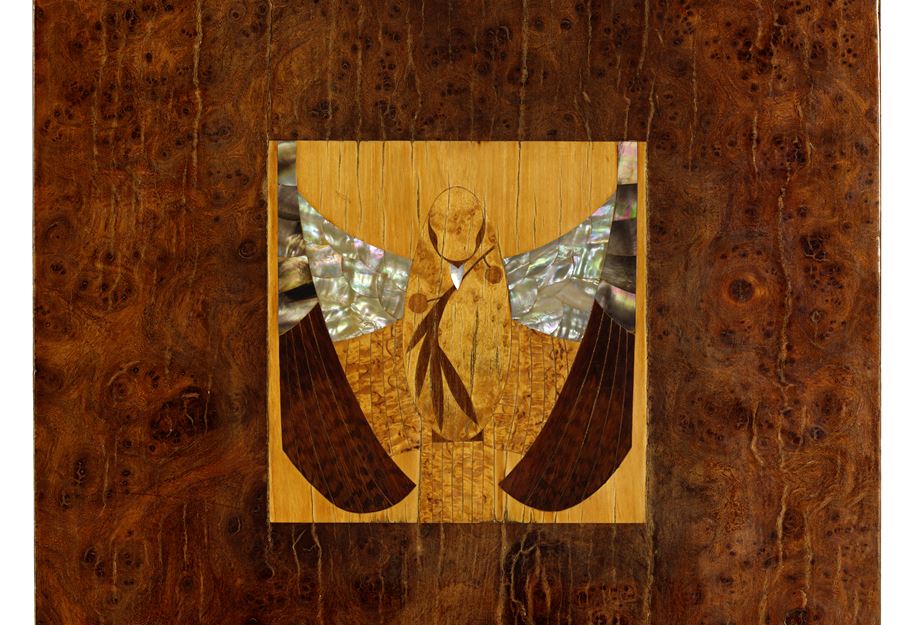
Discover the gallery
Yves Macaux
20th Century Decorative Art

